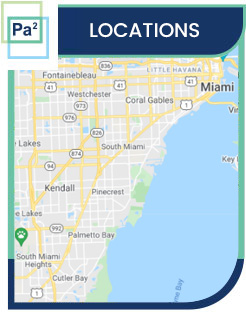Allergy Testing: What It Is, Indications & Types
Allergies affect more than 50 million people living in the United States of all ages, with inhaled allergens being the most common type by far. With proper allergy testing and care, fatal incidents can be avoided, and related diseases. Allergy tests are the best and safest way to tell exactly what triggers your symptoms. Visit Dr. Carlos J. Piniella MD at Piniella Asthma + Allergy Center today to learn more. Contact us today or visit us online to book an appointment. We have convenient locations to serve you in Coral Gables FL and Palmetto Bay FL.


Table of Contents:
What are the types of allergy testing?
What is the purpose of allergy testing?
Is allergy testing for children and adults the same?
What are the benefits of allergy testing?
An allergy is caused by a reaction to a certain substance, known as an allergen. After coming in contact with the body, such as the skin and eyes, allergens can trigger a wide range of symptoms, from mild itching and swelling to severe breathing problems and body-wide rashes. Testing for allergies is essential, especially when allergy-like symptoms arise, including hives, rashes, itchy eyes, nasal congestion, and conjunctivitis. Allergists are medical professionals who specialize in evaluating, diagnosing, treating, and preventing allergies and their complications. They can test for allergies and help figure out the best way to manage allergy symptoms, restoring one’s health so one can live a normal, productive life.
An allergy test is a test used to find out if a person reacts to a certain substance or substances in a way that causes symptoms, otherwise known as an allergy. Allergy testing typically involves having a small amount of an allergen, such as pollen or pet dander, placed on a person’s skin to see if it causes a reaction, but there are other types of allergy tests, some of which use a much different approach. The most common allergy tests include:
• Skin Testing — This is used to evaluate for suspected environmental or seasonal allergies, stinging insect allergies, food allergies, and certain drug allergies. During skin testing, the suspected allergen is placed on the skin; after 15 minutes, the test results are ready. There are 2 methods for skin testing:
• Prick Skin Testing — Using a skin prick device, individual solutions containing the suspected allergens are placed on the skin; the test results are available 15 minutes later.
• Intradermal Skin Testing — Using a small needle, individual solutions containing the suspected allergens are placed just underneath the surface of the skin (subcutaneously); the test results are available 15 minutes later.
• Blood Tests — Called specific IgE tests (also commonly known as RAST), some patients may require blood tests in addition to skin testing to complete their allergy evaluation. These tests may also be provided in some situations where allergy skin testing is not appropriate, such as when a patient cannot discontinue certain medications that would affect skin test results, like antihistamines.
• Food Challenges — This is performed in selected individuals to confirm a food allergy; it may also be used to determine if the individual may tolerate a portion of food that they are currently avoiding. Starting with a very small quantity, incremental doses of the food are given to the patient. Prior to receiving the next dose, each dose is followed by a period of observation and assessment.
• Patch Testing — In individuals who develop contact dermatitis, this type of test is used to evaluate for an underlying trigger/agent. Examples of contact dermatitis include the development of a rash after wearing certain metal jewelry or after using a certain skin care product. The suspected agents are placed in the form of patches on the back; after 48 hours, the patches are removed.
Allergy testing is used to determine if a person has an allergy to a certain substance, such as pet dander, pollen, or any of the common food allergies. The test involves administering tiny amounts of the substance to the person, typically on or on the skin, to see if they have a reaction. The test is used to help determine which allergens, such as certain foods or airborne particulates, the person is allergic to. Allergy testing can be used to help diagnose a wide range of allergies, from medications to foods to environmental allergens.
Allergies affect more than 50 million people living in the United States of all ages, with inhaled allergens being the most common type by far. With proper allergy testing and care, fatal incidents can be avoided, and related diseases such as asthma can be ameliorated.
In most cases, allergy testing is very similar for children and adults, but there may be a few differences when testing children. For example, most allergists prefer to avoid invasive tests, instead opting for more tolerable tests, such as a skin prick test. Since some skin tests can irritate a young child’s sensitive skin, younger children are more likely to get blood tests than adults. Also, blood tests only require a single prick, whereas a skin test or intradermal test requires more.
Some benefits of allergy testing include:
• Understand what is causing the allergy
• Avoid problematic allergens
• Get an effective allergy treatment plan
If you are experiencing allergic symptoms, come to Piniella Asthma + Allergy for allergy testing! Call us today to book an appointment for allergy testing, or visit one of our two Florida locations: we have one clinic in Coral Gables, and one in Palmetto Bay. We look forward to serving you! We serve patients from Coral Gables FL, Palmetto Bay FL, Westchester FL, Brownsville FL, Kendall FL, Pinecrest FL, Richmond West FL, and Goulds FL.

Additional Services You May Need
▸ Asthma
▸ Allergy Testing
▸ Food Allergies
▸ Immunotherapy
▸ Patch Testing
▸ Allergy Treatment
▸ Pediatric Asthma Specialist
▸ Pediatric Allergist
▸ Insect Bite Allergy
▸ Drug Allergy
▸ Seasonal Allergies
▸ Skin Allergy

Additional Services You May Need
▸ Asthma
▸ Allergy Testing
▸ Food Allergies
▸ Immunotherapy
▸ Patch Testing
▸ Allergy Treatment
▸ Pediatric Asthma Specialist
▸ Pediatric Allergist
▸ Insect Bite Allergy
▸ Drug Allergy
▸ Seasonal Allergies
▸ Skin Allergy


